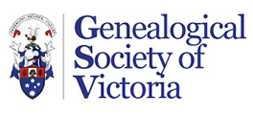
REMINDER - The September Ancestor journal is now out - and available as a Flipbook for members on the website. Log in as a Member. You will still receive a hard copy by post unless you have opted not to have it delivered. But you can read it online at any time as a PDF or flipbook. You can change your delivery directions at any time under your Member Details.
***
Women on the Goldfields
At their August meeting, members of the GSV's VicTas Discussion Circle tackled a difficult research task. Gayle Nicholas - a member of this group - gives us a few insights that were shared in the discussion.
***
There was no doubt the women were strong and resourceful – but how do you find resources? One member told of a mother and 14-year-old daughter who travelled from Kent in England to Victoria, and through the notorious Black Forest to Castlemaine. Another tale was of a woman who left her English husband to partner with a goldminer and stayed with him until his death 20 years later. Accounts of travel to the goldfields, written at the time, help us to imagine these women’s travels as they bumped along the road, got bogged and stopped at Inns, or in the open, for supper and sleep (ref. 1).
The women on the goldfields liked to dress up. The watercolour Digger’s wife in full dressby George Lacy portrayed as laughable the contrast between women in finery against the men and landscape of the goldfields (ref.2). The crinoline (dress) pictured was on display at the Old Treasury in Melbourne for Gold Rush: 20 Objects, 20 Stories in 2018 (ref. 3). The dress is hand stitched with a high level of skill. It is noted as suitable for shopping or visiting – even on the goldfield. The Old Treasury web site is well worth a visit to explore the story of this dress or other artefacts from the goldfields’ era.
Many Women on the goldfields were in childbearing years and were giving birth with the assistance of neighbours or midwives. Doctors were too expensive. Those parents who registered the birth of their children provided a much-needed source of information for today’s family historian.
The high number of deaths of children from accidents or illness was endured.
'Deaths, particularly the deaths of children, were mourned with the force of a lightning bolt to the heart. A child was considered born under a lucky star if she reached her first birthday on the goldfields' (ref.4).
Women also suffered violence, fueled by alcohol, on the goldfields. Author, Claire Wright writes of the acceptance of wife bashing and noise of violence perpetrating the campsite at night (ref. 5).
Death certificates, cemetery records and inquests provide more research material. Group members referred to dropping into local history centres and museums while visiting former goldmining towns e.g. Beechworth, Chiltern, Talbot, and Chewton, to find resources not otherwise available.
All current GSV members are welcome to attend the monthly meetings of the VicTas Discussion Circle. Of course, if you are not a GSV Member you can join easily and benefit from this Circle as well as many others, all of which are part of your membership. (Register at https://dev.gsv.org.au), join the Facebook page https://www.facebook.com/groups/320532581948801or our email mailing list. Email victas@gsv.org.au for more information or for copies of the resource lists from the 'Women on the Goldfields' meeting.
Gayle Nicholas
***
References
1. For example: Duyker, E. A. Woman on the Goldfields: Recollections of Emily Skinner 1854-1878,MUP Melbourne 1995
2. Lacy, G. Digger’s wife in full dress, National Library of Australiahttps://nla.gov.au/nla.obj-134736742/view
3. Old Treasury Building. Gold Rush: 20 objects, 20 stories Old Treasury Building in conjunction with Public Record Office of Victoria, 2018-2019 https://www.oldtreasurybuilding.org.au/past-exhibitions/gold-rush/
4. Wright, C. The Forgotten Rebels of EurekaThe Text Publishing Company, Melbourne reprint 2014 p. 174
5. Wright, C. p. 178

